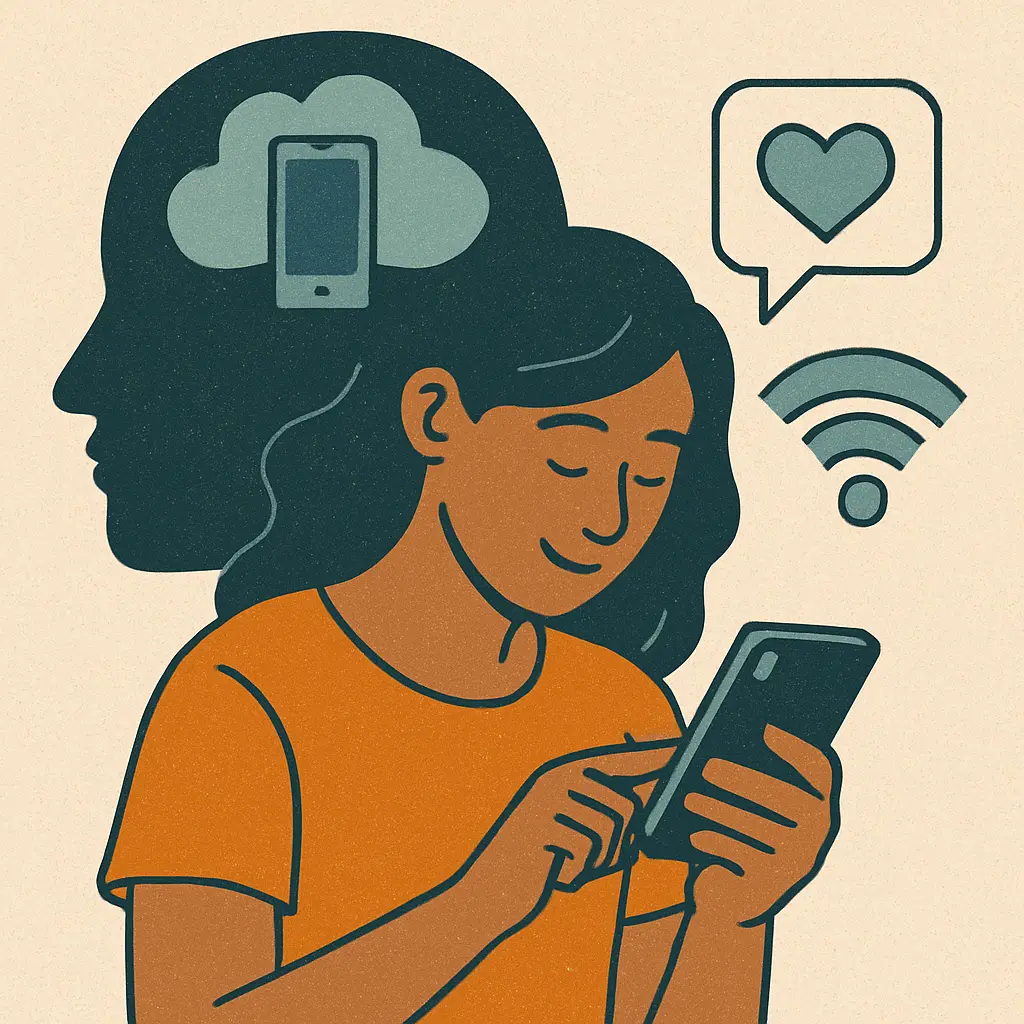We carry more computing power in our pockets than was used to send humans to the moon, yet anxiety and depression rates continue to climb. Technology promised to connect us, but many feel more isolated than ever. How do we harness technology’s benefits for mental health while protecting ourselves from its potential harms?
The Double-Edged Sword of Digital Technology
Technology’s impact on mental health is complex and nuanced. The same smartphone that enables us to access meditation apps and connect with support groups can also fuel comparison, disrupt sleep, and create addictive behaviors.
Positive Impacts:
- Access to mental health resources and information
- Connection with others who share similar struggles
- Tools for mood tracking, meditation, and self-care
- Reduced barriers to professional help through teletherapy
- Creative outlets through digital art, music, and writing platforms
Negative Impacts:
- Social media comparison and FOMO (fear of missing out)
- Cyberbullying and online harassment
- Sleep disruption from blue light and late-night scrolling
- Reduced face-to-face social interaction
- Information overload and news-related anxiety
Understanding Social Media’s Mental Health Impact
Social media platforms design their interfaces to maximize engagement, often exploiting psychological vulnerabilities. Understanding these mechanisms can help us use these platforms more mindfully:
The Comparison Trap: Social media presents curated highlight reels that make others’ lives appear perfect, leading to feelings of inadequacy and depression.
Dopamine Addiction: Likes, comments, and shares trigger dopamine release, creating addictive patterns that can interfere with real-world activities and relationships.
Echo Chambers: Algorithm-driven content can reinforce negative thought patterns and limit exposure to diverse perspectives.
FOMO and Anxiety: Constant updates about others’ activities can create anxiety about missing out or not living life “correctly.”
Digital Wellness Strategies
Creating healthy relationships with technology requires intentional strategies:
Mindful Usage:
- Set specific times for checking social media rather than scrolling constantly
- Use apps that track screen time to increase awareness of usage patterns
- Practice the “phone in another room” rule during meals and conversations
- Implement digital sabbaths or technology-free periods
Curate Your Feed:
- Unfollow accounts that consistently make you feel worse about yourself
- Follow accounts that inspire, educate, or bring joy
- Use platform features to limit exposure to triggering content
- Engage meaningfully rather than passively consuming content
Boundary Setting:
- Turn off non-essential notifications to reduce interruptions
- Create phone-free zones in bedrooms and dining areas
- Set “do not disturb” hours to protect sleep and focused work time
- Communicate your digital boundaries to friends and family
Technology Tools for Mental Health Support
When used intentionally, technology can provide powerful mental health support:
Meditation and Mindfulness Apps: Guided meditations, breathing exercises, and mindfulness reminders can support daily mental health practices.
Mood Tracking Apps: Digital journals that help identify patterns in emotions, activities, and triggers.
Crisis Support Platforms: Text-based crisis hotlines and chatbots that provide immediate support during mental health emergencies.
Teletherapy Platforms: Video therapy sessions that increase access to professional mental health care, particularly valuable in underserved areas.
Online Support Communities: Moderated forums and support groups that connect people with similar mental health challenges.
Sleep and Wellness Apps: Tools that promote better sleep hygiene, exercise tracking, and overall wellness.
The Future of Digital Mental Health
Emerging technologies offer new possibilities for mental health support:
Artificial Intelligence: AI-powered chatbots and assessment tools that can provide initial screening and support while connecting users to human help when needed.
Virtual Reality Therapy: Immersive environments for exposure therapy, relaxation, and skills training.
Wearable Technology: Devices that monitor physiological indicators of stress and mood, providing real-time feedback and intervention suggestions.
Personalized Digital Therapeutics: Apps and programs tailored to individual mental health needs and treatment goals.
Digital Equity in Mental Health
As technology becomes more central to mental health care, we must address digital divides:
Access Issues: Not everyone has reliable internet, smartphones, or computer access, potentially excluding vulnerable populations from digital mental health resources.
Digital Literacy: Older adults and some communities may lack the technical skills needed to access digital mental health tools.
Cultural Relevance: Many digital mental health tools are designed for mainstream populations and may not reflect diverse cultural perspectives and needs.
Privacy Concerns: Mental health data is particularly sensitive, and not all platforms provide adequate privacy protection.
Creating Healthy Digital Environments
Organizations, schools, and communities can promote digital wellness:
Education: Teaching digital literacy and healthy technology habits from early ages.
Policy: Implementing policies that protect user privacy and mental health on digital platforms.
Design: Creating technology that prioritizes user wellbeing over engagement metrics.
Support: Providing resources for those struggling with technology-related mental health issues.
Finding Balance in a Digital World
The goal isn’t to eliminate technology but to use it intentionally in service of our mental health and wellbeing. This requires:
- Regular self-assessment of how technology affects your mood and relationships
- Willingness to adjust digital habits when they’re not serving you
- Balance between digital and in-person connections
- Recognition that technology is a tool, not a replacement for comprehensive mental health care
Technology will continue to evolve rapidly, but our basic human needs for connection, purpose, and wellbeing remain constant. By approaching technology mindfully and intentionally, we can harness its power to support rather than undermine our mental health.
References:
- Primack, B. A., et al. (2017). Social media use and perceived social isolation. American Journal of Preventive Medicine, 53(1), 1-8.
- Twenge, J. M., & Campbell, W. K. (2018). Associations between screen time and lower psychological well-being. Emotion, 18(6), 765-780.


